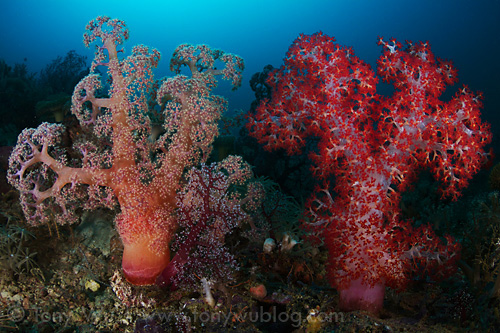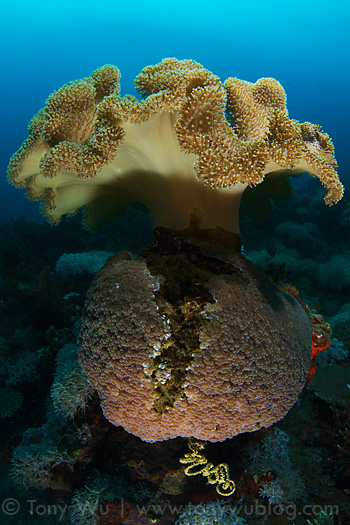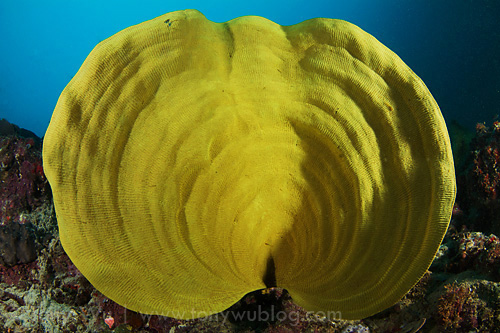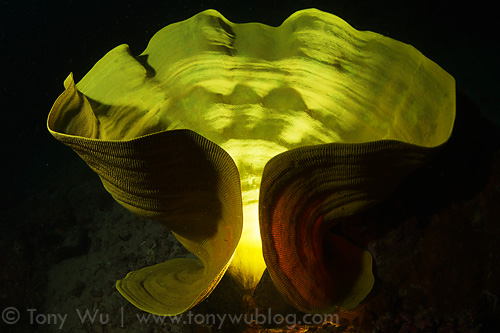Chaos reigns on healthy coral reefs, like the ones found in Papua New Guinea. A profusion of life produces a mesmerising hodgepodge of forms, patterns, nooks and crannies. Divers couldn’t ask for more; there’s so much to take in and enjoy.
But if you’re a photographer, having too much to see can be counterproductive, as visual clutter often results in a ho-hum image, one without a specific subject.
Here’s a photo tip: When presented with visual complexity, try to simplify. Look for strong colours and shapes that are easy to recognise, easy to isolate, and easy to present in an uncluttered composition.
Soft corals, for instance, make great subjects, especially if you can find some that aren’t intertwined with lots of other stuff, like this scene I came across on a dive yesterday at a site in Milne Bay called Sullivan’s Patches:

Colourful soft coral at Sullivan's Patches in Milne Bay
Having stark colours and contrast side-by-side like this immediately draws your viewer’s attention.
Try looking for interesting shapes and combinations of shapes as well. Also at Sullivan’s Patches, I came across this intriguing formation with a mushroom leather coral perched perfectly atop a globe-like coral that had a jagged cleft in it for character. Those two elements alone got my attention, but what sealed the deal for me was the squiggly little wire coral at the bottom that looks somewhat like a piglet’s curled-up tail.
Each coral alone isn’t terribly interesting. Viewed together however, they acquire new meaning, transforming into something akin to a floral arrangement...an aquatic still-life, of sorts.

Interesting coral formation, with a squiggly little pigtail for emphasis
At Hornbill Channel a few days ago, the visibility was so-so, but there were a lot of elephant-ear sponges in an assortment of shapes and sizes. Swimming from one to the next, I came across the unusual specimen pictured below, which provided both colour contrast and symmetry...

Symmetrically shaped yellow elephant-ear sponge at Hornbill Channel
...as well as this one, which looked to me like it belonged in an art gallery, or perhaps even a museum of modern art:

Nature produces amazing works of art,
like this elephant-ear sponge that looks like a sculpture
My point...by all means enjoy the reef’s complexities and subtleties, but keep an eye out for simple forms and striking colours, which make perfect photo subjects.
On that note, we’re heading out again today for the final leg of this three-part adventure, so I’ll be offline again for a while.